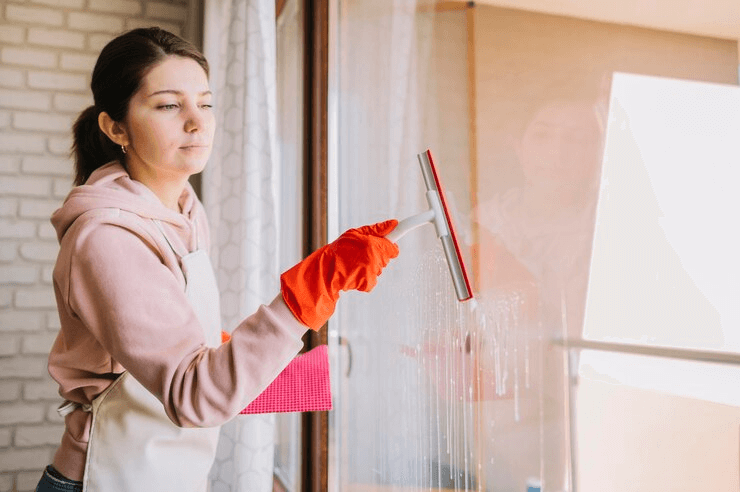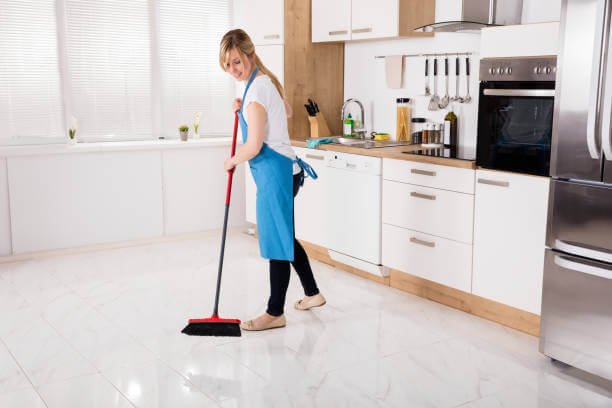
The process of home renovation brings excitement. The method provides a new look, an updated atmosphere, and a space designed to meet your lifestyle needs. The difficult-to-ignore aftermath of the builder’s departure reveals a substantial mess. The presence of dust, combined with grime and remaining debris, transforms an attractive renovation into an untidy and unfinished space. Our post-renovation cleaning methodology is designed to address these situations. The complete guide provides ordered home cleaning tips after renovation, resulting in a hygienic and refreshed home environment.
The process of home renovation brings excitement. The method provides a new look, an updated atmosphere, and a space designed to meet your lifestyle needs. The aftermath of the builder’s departure leaves a noticeable mess. Microfiber cloths work exceptionally well for dust collection, performing better than dust dispersion techniques. You must clean each wall surface, as well as the ceilings, doors, trim, and furniture, until every area is free of dust. A HEPA filter vacuum cleaner specialized for cleaning fine renovation particles should be used for this step.
A HEPA filter is essential for removing drywall dust safely and effectively from your home. Always watch for dust in unexpected spots, including crown moldings besides baseboards, air vents, and light fixtures. Light dampness applied through cloth helps surface cleaning while stopping dust particles from dispersing back into the air. Correctly sanitize the air by installing an air purifier in all areas significantly affected by dust and allergens during the cleanup process. This approach is one of the top post-renovation cleaning hacks for maintaining good air quality while cleaning.
Renovation projects cause almost all of the damage to floor surfaces. A complete floor cleaning following remodeling is absolutely necessary to bring back the original luster and cleanliness of your flooring, whether it be scratches, scuff marks, adhesive residue, paint splatters, or layers of construction dust. Start removing big things and loose debris with a brush or vacuum. Use a suitable floor cleaner to clean the surfaces without affecting their finish, and then apply your mop solution to tile, vinyl, laminate, and hardwood surfaces. These surfaces are often concealed within carpets. Hot water extraction or steam cleaning methods are suitable for treating the heavy accumulation of older floor stains.
Reference care instructions by your manufacturer or mop rinsing will help prevent dirt from spreading throughout the areaWhether it’s scratches, scuff marks, adhesive residue, paint splatters, or layers of construction dust, a deep floor cleaning after renovation is essential to restore your flooring’s original shine and cleanliness Dust, allergens, and barely visible debris require professional post-renovation cleaning services to ensure the best results.
Construction dust permeates deeper than visible surfaces because it infiltrates the ventilation system found throughout your home. Post-construction house cleaning activities still overlook the HVAC system, among the most common. Improving air quality criteria and guaranteeing operational efficiency depend on keeping air vents clean and duct cleaning. Begin your procedure by removing and washing every vent cover with warm, soapy water. Hold a vacuum cleaner with its hose attachment while cleaning the debris and dust. While cleaning ducts, a long attachment combined with a flexible brush makes the process even more efficient.
Change your HVAC air filter after you finish cleaning the vents. Building renovation materials create small particles that rapidly accumulate on air filters, thereby diminishing ventilation performance and reducing indoor air quality. If the system appears too clogged or inaccessible, you can employ professional HVAC duct cleaning services or renovation cleaning companies that offer air duct cleaning services. Always replace the filter immediately after finishing any remodeling work. An HVAC air duct cleaning is a worthwhile investment that helps your family in two ways: comfort and respiratory wellness.
The appearance of your home greatly depends on how you maintain your windows, which commonly receive minimal attention during cleaning tasks. Post-renovation window cleaning is essential to make your space bright, open, and clean. The renovation period creates conditions allowing windows to collect different types of dust, dirt, and paint droplets.

It makes a luminous setting that starts with cleaning the window frames and sills and using vacuum action or brushwork to remove track debris. Take your time and carefully scratch the glass surface. Cleaning both sides of the windows is possible before performing dust removal on window blinds and washing curtains.
Every surface in your house, from kitchen counters and cabinets to bookcases and baseboards, demands care during post-renovation cleanup. Dust floats and settles on unanticipated areas; thus, a complete surface wipe-down is required. Dust ceiling fans, hanging light fixtures, top shelves, and the tops of door frames. Then move to walls, furniture, and other mid-level surfaces.
A vacuum brush and fabric-safe cleaning solutions should be used to clean upholstered furniture. Being conscious of details can enable you to eliminate allergies from your environment and improve the beauty of your home.
Constructive and laundry appliance relocation, as well as protective covering, can cause these machines to retain dust, debris, and odors. A thorough home cleaning tips requires checking the spacious areas behind major appliances, beneath them, and within their interiors. Begin by placing the refrigerator and oven units alongside the washer and dryer on the floor to clean the interior and exterior surfaces.
A hot washing cycle in the dishwasher and washing machine removes mold smells and accumulated dust. Naturally cleaned appliances achieve a better appearance while simultaneously operating at higher efficiency.
After a meticulous dusting and mopping session some remnants, such as screws, leather nails, wood fragments and tile fragments, commonly remain on the floor The final step in cleaning after renovation is a detailed sweep-through of every room You should use a shop vacuum combined with a heavy-duty vacuum cleaner to eliminate small particles and harmful objects in tough spots, including under furniture, closets, runners, and beneath stairs.

When gathering sharp and dangerous goods, gloves should be used for hand protection. Correct disposal of renovation debris produces a safe and clean environment, enabling daily usage of your house. Including such final touches always contributes to finishing and operational security in operations.
Post-renovation cleaning may feel daunting, but with a solid plan and these practical home cleaning tips, you’ll have your space looking and feeling like new in no time. Before completing the renovation cleaning, conduct a thorough sweep-and-check procedure in every room. From unreachable areas, including closets, corners, under furniture, and under stairs, a shop vacuum and a heavy-duty vacuum cleaner will safely remove tiny particles and dangerous objects.
Following this home cleaning tips will help you to produce a living space that is both visually beautiful and clean and healthful. Put gloves on before reaching for objects that may be dangerous or sharp because your hands need protection. The correct disposal of renovation waste leads to a home environment that is safe, clean, and usable for everyday life. The final step ensures the inclusion of essentials and safety measures as standard procedures.
Your home’s size and the project’s extent will determine this. Usually, a thorough post-renovation deep clean takes anything from several hours to a full day.
Using a HEPA vacuum, wipe surfaces with a moist microfiber cloth. Run an air purifier to catch airborne dust; repeat if required.
Vacuum thoroughly at least twice; if dust and smells remain, think about having your carpet professionally steam cleaned.
Have questions or need assistance beyond our AI Quote and Help? Our team is here to support you! Fill out the form below, and we’ll get back to you as soon as possible.